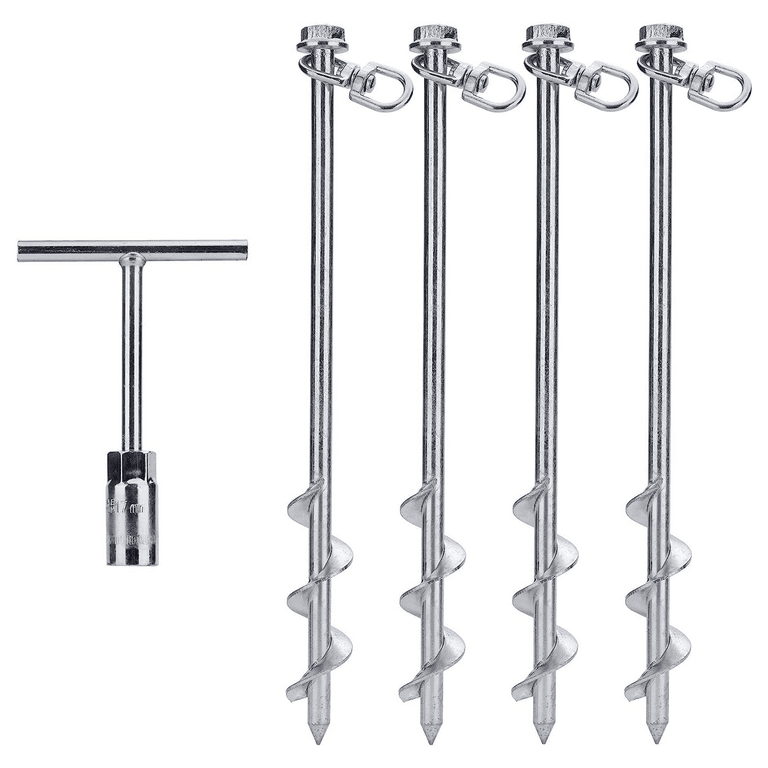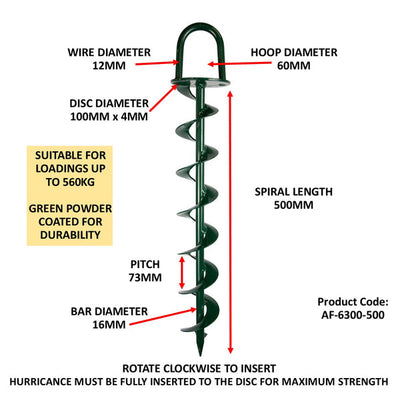Security Experts Share Insights on the Best Ground Anchor Solutions
Discover the Various Kinds Of Ground Anchor for Your Following Project
When starting a construction or landscape design job, understanding the various sorts of ground anchors readily available is vital to guaranteeing both stability and sturdiness (Ground Anchor). From auger supports, which master varied soil conditions, to stake anchors created for temporary setups, the alternatives are many. Additionally, concrete and screw anchors present special benefits in particular situations, while deadman supports are tailored for applications requiring resistance to side forces. The option of an appropriate support kind can dramatically influence the general success of your project, motivating more expedition into their corresponding benefits and applications.

Auger Anchors
Auger supports are a popular selection in various building and landscape design jobs as a result of their special layout and efficient anchoring capacities. These anchors are composed of a helical screw-like shaft that is driven right into the ground, allowing for a stable and safe and secure hold. The spiral style promotes very easy installation and maximizes resistance versus side forces, making auger anchors specifically effective in applications such as fence, temporary structures, and erosion control.
The installation procedure of auger supports is reasonably straightforward. They can be by hand or mechanically set up, relying on the size and needed depth. This adaptability enables for their usage in varied soil conditions, from sandy to clayey terrains. Furthermore, auger supports can be easily eliminated and reused, which includes to their cost-effectiveness and sustainability.
Among the significant advantages of auger supports is their capacity to distribute lots equally across the surrounding dirt, lowering the risk of dirt disturbance and lessening environmental influence. Additionally, they are less prone to loosening up or heaving in time contrasted to conventional securing techniques. Consequently, auger supports are an outstanding option for projects requiring reliable and resilient anchoring services.

Risk Anchors
When it pertains to safeguarding structures in a selection of exterior applications, risk supports supply a reputable and simple solution. These supports are usually constructed from long lasting products such as steel or aluminum, made to endure environmental anxieties while offering optimum security. Their straightforward design permits fast setup, making them an optimal choice for irreversible or temporary anchoring demands.
Risk supports are particularly valuable in protecting camping tents, covers, and various other light-weight structures against wind and weather. They function by being driven right into the ground at an angle, developing a solid hold that resists pull-out pressures - Ground Anchor. The effectiveness of stake supports depends upon a number of aspects, consisting of dirt kind, moisture material, and the angle of installment
For included protection, many stake supports come with accessory factors for bands or ropes, permitting tension adjustments as necessary. In applications such as landscape design or construction, they can efficiently maintain devices or frameworks on irregular surface. On the whole, risk supports provide a versatile and affordable remedy for protecting different exterior installations, making them a preferred choice for specialists and DIY enthusiasts alike.
Concrete Anchors
Concrete anchors provide a robust service for protecting frameworks to concrete surfaces, ensuring security and security in numerous applications. These supports are crucial for jobs varying from household buildings to large-scale commercial installments. They come in different types, including development anchors, sticky anchors, and undercut supports, each created for specific load demands and environmental problems.
Expansion anchors rely upon mechanical devices to grip the concrete when installed. They are perfect for tool to heavy-duty applications. Adhesive anchors make use of high-strength epoxy or resin to bond the anchor to the concrete, supplying remarkable load-bearing abilities, particularly in broken concrete situations. Undercut anchors produce an one-of-a-kind form within the concrete, giving extraordinary holding power, particularly in applications where tensile lots prevail.
Selecting the ideal concrete support entails thinking about aspects like this such as the weight of the load, the condition of the concrete, and environmental conditions. Appropriate installation techniques are vital to make certain optimal performance and dependability. When carried out properly, concrete anchors dramatically improve the architectural integrity of different jobs, making them indispensable in modern-day building and construction techniques. Comprehending the particular demands of your project will assist in picking the appropriate type of concrete support for the task.
Screw Anchors

Screw anchors are a versatile securing solution that can be effectively employed in a selection of applications where conventional concrete anchors may not be enough. These supports contain a helical design that allows them to be conveniently driven right into the ground, making them perfect for use in dirt and various other substratums. Their one-of-a-kind structure offers outstanding holding power and resistance to pull-out forces, making them suitable for countless projects, from landscape design to structural support.
Among the primary benefits of screw anchors is their ease of installment. They need very little tools and can usually be mounted without the requirement for excavation, which saves both time and labor expenses. Additionally, screw supports can be removed and recycled, supplying a lasting remedy for short-term applications.
Screw supports are specifically beneficial in locations where soil conditions are challenging, such as loose or sandy soils. Their capability to be set up at varying depths enables modification based on specific task demands. In general, screw anchors provide a reliable and reliable anchoring technique, making them a superb option for specialists and designers looking for efficient options for their jobs.
Deadman Anchors
Deadman anchors work as a durable solution for supporting web structures in challenging conditions, especially where traditional securing techniques might fail. These anchors include big, hefty items buried underground, which produce resistance against lateral pressures. The layout generally involves a straight part, such as a block of concrete or a metal plate, hidden in the dirt, to which cords or bands are connected.
The performance of deadman anchors hinges on their capacity to disperse tons over a larger location, lowering the risk of failure in unpredictable soil problems. They are especially beneficial in applications such as maintaining walls, short-term frameworks, and slope stablizing, where soil activity can compromise the integrity of the structure.
Installment of deadman anchors needs mindful planning to ensure they are positioned at the appropriate deepness and alignment, maximizing their load-bearing ability. While they might require more labor and product than light-weight anchors, their integrity in damaging problems makes them indispensable for lasting jobs. Additionally, deadman anchors are versatile and can be adjusted to various applications, making them a go-to choice for engineers dealing with unique difficulties in their jobs.
Verdict
Auger anchors excel in diverse dirt conditions, while stake supports suit short-lived applications. For concrete surface areas, growth and glue supports provide trusted choices, and screw supports use flexibility in difficult surfaces.
In addition, concrete and screw anchors existing unique advantages in specific circumstances, while deadman anchors are customized for applications requiring resistance to lateral pressures - Ground Anchor.Auger supports are a popular choice in various building and construction and landscaping jobs due to their one-of-a-kind layout and effective anchoring capabilities. weblink They come in various kinds, consisting of development supports, glue supports, and undercut anchors, each developed for particular load demands and environmental problems
Adhesive supports make use of high-strength epoxy or material to bond the support to the concrete, supplying premium load-bearing abilities, especially in broken concrete situations. Overall, screw supports give a effective and reputable anchoring technique, making them an outstanding selection for engineers and service providers looking for efficient solutions for their jobs.